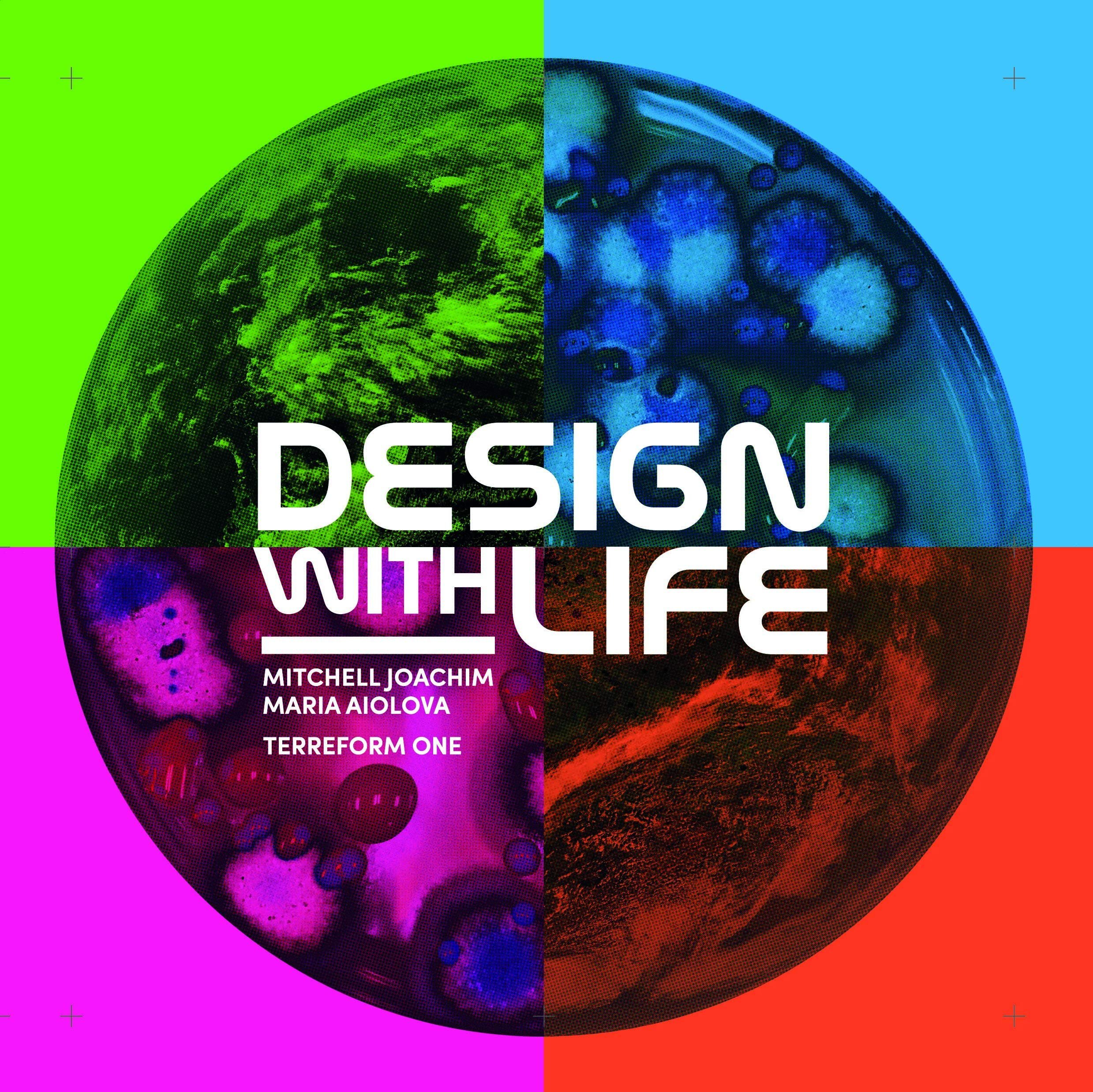DESIGN WITH LIFE: BIOTECH ARCHITECTURE AND RESILIENT CITIES BY MITCHELL JOACHIM, MARIA AIOLOVA, AND TERREFORM ONE. ACTAR PUBLISHERS, 2019.
This volume chronicles the projects and breakthroughs of Terreform ONE. They are a nonprofit research group that defines salient new directions in socio-ecological design and other vital intersections of architecture, synthetic biology, and urban systems.
The main idea of this book is to design against extinction. In the challenging context of accelerating climate dynamics, the core discipline of architectural design is evolving and embracing new forms of action. New York-based nonprofit Terreform ONE has established a distinctive design tactic that investigates projects through the regenerative use of natural materials, science, and the latest emergent fields relevant to urban design. This kind of design approach uses actual living matter (not abstracted imitations of nature) to create new functional elements and spaces. These future-based actions are not only grounded in social justice but are also far-reaching in their application of digital manufacturing and maker culture. Terreform ONE tackles urgent environmental and urban social concerns through the integrated use of living materials and organisms.
Mitchell Joachim and Maria Aiolova, founders of Terreform ONE, describe their practice through various projects and prolific research that has made a significant impact on what is increasingly recognized as socio-ecological design. Together they achieve an abundant collection of projects that validate these unique experimental methods, including the Monarch Sanctuary, a new urban building type to protect butterflies from extinction; Cricket Shelter and Farm, a series of modular volumes for harvesting alternate forms of insect protein; and biodegradable structures called Mycoform that invokes principles of synthetic biology to prototype 100% compostable furniture. Design with Life documents this growing body of work and outlines an original direction for a changing discipline, reviewing concepts at a range of scales for metropolitan areas. In an age where speed is everything, Terreform ONE reveals how future architecture and urban design practices can cultivate biological processes and create resilient answers to tomorrow's wicked problems.
Design with Life intentionally turns the discipline of architecture upside-down. The book contains a plethora of essays from esteemed architects, biologists, historians, artists, and educators that reframe the way in which design develops as a practice alongside science. Within this book, we explore solutions that make a direct impact on our altered atmosphere. It’s a compilation of advanced research that reviews concepts in the art of biotechnology from insect food sourcing to fungi building components in cities across the globe. As of today, the planetary climate crisis has reached a penultimate state. The nature of the next impending catastrophe and its implications in design has yet to be determined.
Stemming from work initially developed at Terreform ONE and other prominent organizations in the field, this volume disseminates ecologically intelligent design in various speculative urban contexts. Equally, it unpacks projects and histories by other major theoreticians in many comparable disciplines. Throughout these inventive structures and public activities, the aim is to expose the environmental potentials within local municipalities and stimulate similar resolutions in comparable neighborhoods.
For over a decade the works herein were developed in matchless laboratories such as New Lab, Genspace, MEx, Cooper Union Kanbar Center for Biomedical Engineering, and MIT Media Lab, each of which is filled with specialists from diverse disciplinary backgrounds and methodologies. These pioneering individuals refocused their efforts to discover and expand projects into the larger framework of socio-ecological urbanism. Primarily the research inside this volume cultivates innovative concepts and technologies for sustainability in energy, transportation, infrastructure, buildings, manufacturing, waste treatment, food, air quality, and water. Original investigations are derived from the effective techniques explored within the joint territory of design and synthetic biology.
Contributing Authors: Vivian Kuan, Heather Newberry Lord, John Rudikoff, Nurhan Gokturk, Christian Hubert, Nina Edwards Anker, Peder Anker, Srdjan Jovanovic Weiss, Charles C. Mann, Ray K. Mann, Bruce Lindsey, Winka Dubbeldam, Charles McKinney, Julie Bargmann, Margie Ruddick, Forrest Meggers, Dickson Despommier, Suzanne Anker, Marcos Cruz, William Myers, Orkan Telhan, Nurit Bar-Shai, Ellen Jorgensen, Zack Saunders, Bob Fisher, Sanjeev Shankar, Amy Karle, Nicholas Gervasi, Paul C. Bart, and Marvin Bratke.


